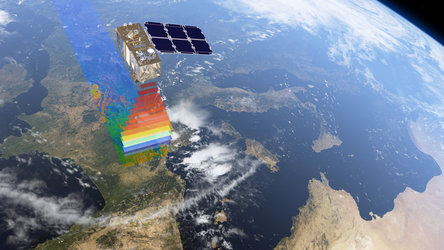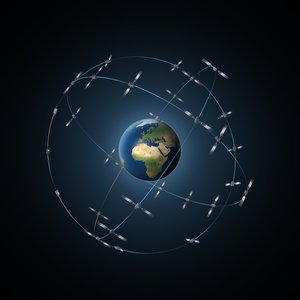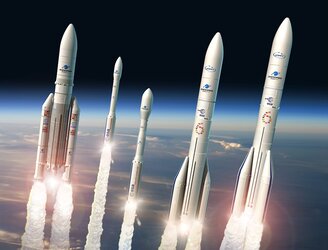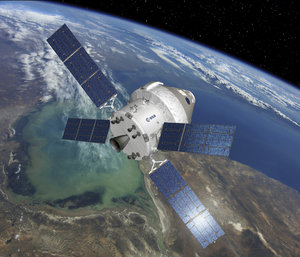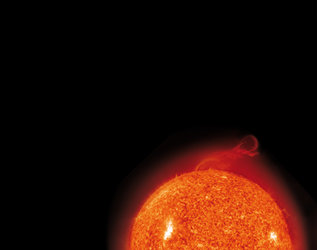Telecommunications and Integrated Applications Programmes
Core Competitiveness Programme
Goal
Support European and Canadian industry to ensure their competitiveness on the worldwide market and world-class competitive industrial ecosystems that keep developing in Europe following the disruptions introduced by the emerging systems (mega-constellations in particular).
Outcome
ARTES Future Preparation
Establishment of a solid sectorial long-term plan for telecommunications and preparation of future initiatives for ARTES telecommunications.
ARTES Core Competitiveness
A set of competitive products and applications in the satcom worldwide market. Positioning European satcom industry as competitive suppliers for the evolution of low Earth orbit (LEO) telecoms mega-constellations and other business opportunities. ESA will provide financial support and sectorial knowledge so as to co-manage in an unbiased manner the activities. ARTES ScyLight, for instance, will support the developments of new innovative optical technologies for satcom covering ground- and space-segment including developments on quantum cryptography technology. It will also prepare the satcom roadmap on optical communications.
 |
 |
 |
Impact
ARTES Future Preparation
Support for long-term strategic elements such as satellite spectrum issues and relevant export regulations.
ARTES Core Competitiveness
Response to the ever-increasing challenge to enhance the competitive position of industries in the Participating States for systems, equipment, applications and services in the world market. In particular, the LEO mega-constellations provide a significant opportunity for strategic positioning of industry.
Integrated applications promotion (IAP)
Goal
Promote innovative services by new user communities provided by space technologies to support and enable the growth of the space sector and consequently of the economy.
 |
 |
 |
Outcome
Support for industry to develop sustainable services able to generate a positive socio-economic impact; the support is end-to-end from the service concept to the deployment and commercial rollout. Development of services serving common goals responding to the needs of EU citizens and communities.
Impact
Following the socio-economic impact assessment, the IAP Phase 3 has a great potential to multiply the positive results in terms of job creation, revenue growth, investment leverage, value creation for the users, exports and societal benefits. IAP is enabling access for European industry to third-party funding.
Public Private Partnerships
Encouraging innovation to bring advanced solutions to the everyday life of citizens.
Goal
Ensure that successful partnerships are implemented in order to support a strong and competitive space industry, fully in line with European space policy guidelines. All these projects are to be co-funded by the private partners.
Outcome
Neosat
Complete development and first flight opportunity missions of the new telecom platform product lines in the 3–6 tonne launch mass segment for EADS and Thales Alenia Space.
Iris (Satellite Communication for Air Traffic Management)
Support EC effort for the modernisation of its air traffic management system.
GlobeNet
A global data relay service that can interoperate with other agency systems and provide worldwide coverage to anchor users such as Copernicus, security users and ISS/Columbus. This includes a world standard for data relay and laser terminal market opportunities for European industries.
SAT-AIS (Automated Identification System via Satellite)
Beyond the currently developed satellite-A (ESAIL) with high-performance ship detection capabilities, the Triton-X platform will be developed with reduced unit costs.
 |
 |
 |
Impact
Neosat
The fully modular approach and the extensive use of innovative technologies retained by both prime contractors and their suppliers will allow the accommodation of a wide range of telecommunication payloads. It will also offer two different propulsion systems and help to reduce manufacturing schedules, allowing customers to choose the configuration that work best for them with a full compatibility with European launchers.
Iris
This represents the first development milestone of the satcom long-term solution as part of the overall future air traffic infrastructure. European industry will be given the possibility to maintain its leadership in the modernisation of air traffic management, and to be well positioned for the future deployment both in Europe and worldwide.
GlobeNet
The development of a sustainable satellite data relay services market through the exploitation of the infrastructure with commercial/institutional users beyond ESA that will benefit many user communities, including human spaceflight and launchers.
SAT-AIS
Streamlined microsatellite platforms with reduced recurring costs will generate more frequent mission opportunities for new small low Earth orbit constellations.
ARTES Partner Programme
Goal
Electra
Develop an all-electric geostationary satcom platform in the 3-tonne range.
ICE
Operate a next-generation satcom mobile system with optimised infrastructure fitted to the new market trends and end-user expectations such as higher data rates service, better efficiency to serve emerging machine-to-machine applications and additional broadcast/multicast functions.
Pioneer
Create opportunities for smaller/newer ESA Member States to develop space systems in a (pre-) operational environment; exploit synergies with commercial operators to exploit unused capacity in a cost-effective way.
GOVSATCOM Precursor
Pool resources between the different applications to provide Europe with a cost-effective solution in support to EU governmental communications requirements such as common security, civil protection/ humanitarian aid, border and maritime surveillance and arctic communications.
Lynxsat
Combine innovative space and ground segment in an end-to-end approach together with the satellite operator to target the lowest-possible satellite capacity delivery cost.
Aidan
Introduce European players into the ecosystem of a leading satellite operator network, offering a strategic advantage in the delivery of European ground segment products globally.
 |
 |
 |
Impact
Electra
Satellites in the 3-tonne range are becoming an important part of the satcom offer with the landscape of launchers. Full electric propulsion allows an optimisation of the payload/launch mass ratio and cost/bit in orbit.
ICE
Involvement of many European/Canadian satcom industries with opportunity to enter the Inmarsat ecosystem. Possible synergies with other missions requiring polar coverage and therefore act as an enabler by hosting secondary mission payloads.




